39 linux list disk labels
How To List Disk Partitions In Linux - OSTechNix There are many ways to view disk partitions in Linux. First, we will start with lsblk command line utlity. 1. List disk partitions in Linux using lsblk command The lsblk utility is used to display information about a specified block device as well as all available block devices, along with their partitioning schemes in Linux. Solved: How to label a disk in Linux - Cloud Vedas In this post we will see how to label a new disk in Linux and create a new LVM partition. Step 1 Scan the new LUNS. Step 2 List the available disks and identify the one you want to use. Step 3 Use fdisk to label the disk. Here we are using disk sdb . [root@cloudvedas scsi_host]# fdisk /dev/sdb Welcome to fdisk (util-linux 2.23.2).
List Device Names, Disk and Partition Information in Linux with lsblk ... lsblk -o +FSTYPE,LABEL Show Removable Devices/USB Memory Sticks lsblk -o +RM will display an extra column that tells you if the device is removable. A "1" value means "true," which indicates a USB stick or other types of removable media. Show HDD/SSD Model

Linux list disk labels
en.wikipedia.org › wiki › GUID_Partition_TableGUID Partition Table - Wikipedia GPT uses 64 bits for logical block addresses, allowing a maximum disk size of 2 64 sectors. For disks with 512‑byte sectors, the maximum size is 8 ZiB (2 64 × 512‑bytes) or 9.44 ZB (9.44 × 10²¹ bytes). For disks with 4,096‑byte sectors the maximum size is 64 ZiB (2 64 ZB (75.6 × 10²¹ bytes). In 2010, hard-disk manufacturers ... Linux Today: Linux News, Tutorials & Guides for 2022 LinuxToday is a contributor-driven news resource for Linux users. We aim to solve complex computing & IT problems. ---News. IT Management ... This brief guide explains what Filelight is and its uses, how to install Filelight in Linux, and then how to visualize disk usage in Linux operating systems. Developer 5 Free and Open-Source ... linux - List partition labels from the command line - Unix & Linux ... 5. This will not list all partitions but you can view and alter what you like with tune2fs. $ sudo tune2fs -l /dev/sda1. You can use a command such as this to get all the /dev/sda* devices. $ sudo sh -c 'echo /dev/sda* /dev/mapper/fedora* | xargs -n 1 tune2fs -l'. Share. Improve this answer.
Linux list disk labels. en.wikipedia.org › wiki › Disk_partitioningDisk partitioning - Wikipedia Disk partitioning or disk slicing is the creation of one or more regions on secondary storage, so that each region can be managed separately. These regions are called partitions. It is typically the first step of preparing a newly installed disk, before any file system is created. The disk stores the information about the partitions' locations ... Today: Linux News, Tutorials & Guides for 2022 LinuxToday is a trusted, contributor-driven news resource supporting all types of Linux users. Our thriving international community engages with us through social media and frequent content contributions aimed at solving problems ranging from personal computing to enterprise-level IT operations. Linux - Logical Volume Manager (LVM) Command Examples Linux LVM command examples. Popular LVM command examples for Linux systems and servers. Howto create Physical Volumes (PV), VolumeGroups (VG) and Logical Volumes (LV). Howto increase the size of a Linux file system. Adding disk to a LVM managed system. › it-infrastructureIT Infrastructure | IBM With the right servers, storage and technologies, you can apply a zero-trust approach to protect against breaches, keep data private across hybrid ecosystems and unify data protection with cyber resilience.
[SOLVED] Unrecognised disk label - gparted - LinuxQuestions.org The key was to first install dcfldd. Code: sudo apt-get install dcfldd. Code: # dcfldd if=/dev/zero of=/dev/sdc bs=1M. Remove and reinsert USB drive. Code: # cmp /dev/zero /dev/sdc. The cmp will fail at the point when it has reached the end of your drive (14.6GB) hopefully. How to get drive label in Linux using C from userspace 1 I need to get a label for specific device using c/c++ (and no d-bus) in linux. The problem is that i can't just open device and read it's information (for extN it is very easy to get label from device) because reading from /dev/xxx requires root privileges. c linux label drives Share Improve this question edited Nov 6, 2010 at 11:55 skaffman › linux › man-pagesmount(8) - Linux manual page - Michael Kerrisk -l, --show-labels Add the labels in the mount output. mount must have permission to read the disk device (e.g. be set-user-ID root) for this to work. One can set such a label for ext2, ext3 or ext4 using the e2label(8) utility, or for XFS using xfs_admin(8) , or for reiserfs using reiserfstune (8). Ls Command in Linux (List Files and Directories) | Linuxize ls is one of the basic commands that any Linux user should know.. The ls command lists files and directories within the file system, and shows detailed information about them. It is a part of the GNU core utilities package which is installed on all Linux distributions. This article will show you how to use the ls command through practical examples and detailed explanations of the most common ...
Disk partitioning - Wikipedia Disk partitioning or disk slicing is the creation of one or more regions on secondary storage, so that each region can be managed separately. These regions are called partitions. It is typically the first step of preparing a newly installed disk, before any file system is created. The disk stores the information about the partitions' locations and sizes in an area known as the partition table ... disk - List all partition labels - Ask Ubuntu Simply labels? $ ls /dev/disk/by-label/ Download MuruHome Ubuntu Windows8 arch Or better: $ tree /dev/disk/by-label/ # or use ls -l /dev/disk/by-label/ ├── Download -> ../../sda6 ├── MuruHome -> ../../sdc2 ├── Ubuntu -> ../../sdc1 ├── Windows8 -> ../../sda2 └── arch -> ../../sda1 show all unmounted disk labels? - LinuxQuestions.org blkid -c /dev/null. will show all mounted and unmounted disk labels, along with UUID, filesystem, and device. Some of the other suggestions are of no use to me unfortunately. Some distros of Linux don't have the /dev/disk/by-label/ directory (mine doesn't) so that can't be used. fdisk -l doesn't show labels (at least it doesn't on mine). How to label disk in Linux with blkid Use the syntax below to add a label to any disk partition of your choosing. $ sudo e2label /dev/sda5 "MY_BACKUP" Another way to add a label is with the tune2fs command. The following syntax would be used to add a label to our /dev/sda5 partition. $ sudo tune2fs -L "MY_BACKUP" /dev/sda5
› shell-script-to-check-diskShell Script to Check Disk Space Usage - GeeksforGeeks Apr 20, 2021 · Disk usage is a report generated by the Linux system about different disks available or created on the secondary memory. These disks are also known as partitions, they have their isolated filesystem. This facility provides us the measurements of different labels or features like Used space, Free space, Filesystem of the disk, etc.
List Disks on Ubuntu - Linux Hint Using lsblk Command: You can list all the attached disks on your computer from Ubuntu using the lsblk command as follows: $ sudo lsblk. The ones with the TYPE disk are the physically attached disks on your computer. The ones with the TYPE part are the partitions of the disks. The lsblk command without any filter shows a lot of loop devices that ...
Getting disk label in Linux in C/C++ - Stack Overflow find -L /dev/disk/by-label -inum $ (stat -c %i /dev/sda1) -print That is, stat () the device file you care about and remember its inode number. Iterate over all of the files in /dev/disk/by-label, and stat () each of them. When the inode number matches, then the name of the matched file is the label of that disk.
How To Find Hard Disk Drive Details In Linux - OSTechNix 5. Check Hard Disk Drive Details In Linux Using Lsblk. Lsblk is a command line utility to display all available or the specified block devices in Unix-like operating systems. It reads the "sysfs" filesystem and "udev db" to gather information. The lsblk command is part of the "util-linux" package, which comes pre-installed in most Linux ...
6 Different Ways to List Disks in Linux Command Line 6 Different Ways to List Hard Drives in Linux Helder Listing Hard Drives in Linux 1. df 2. fdisk 3. lsblk 4. cfdisk 5. parted 6. sfdisk There are several ways to list all the hard drives present in a system through Linux command lines.
How to Create and Manage Linux Partitions using Parted - Linux Shell Tips The command helps list the disk labels present on your Linux system making it easier to identify the one that will be used to create the needed Linux partitions. $ sudo fdisk -l Find Linux Disk Labels. From the above command output, we have identified /dev/sda as the targeted disklabel with a logical/physical sector size. Please note that it is ...
openSolaris 2008 - Creating and Examining a Disk Label - System ... How to Examine a Disk Label. Examine disk label information by using the prtvtoc command. For a detailed description of the disk label and the information that is displayed by the prtvtoc command, see Chapter 10, Managing Disks (Overview). Become superuser or assume an equivalent role. Display the disk label information. # prtvtoc /dev/rdsk ...
How to label a partition or volume on Linux with e2label Use the e2label command and the syntax below to add a label to any disk partition of your choosing. Just substitute your own partition in place of /dev/sdX below, and your own label in place of MY_BACKUP . $ sudo e2label /dev/sdX "MY_BACKUP" Please note that the maximum label length is 16 bytes, in other words 16 characters.
Monitoring Disk I/O on Linux with the Node Exporter 3.6.2019 · Lesson 2 – Node Exporter Mastery. Besides the tools presented above, Prometheus can be one of the ways to actively monitor your disks on a Linux system. If you not familiar with Prometheus, do not hesitate to check the definitive guide that we wrote available here. As a quick reminder, Prometheus exposes a set of exporters that can be easily set up in order to monitor …
Linux Change Disk Label Name on EXT2 / EXT3 / EXT4 File Systems Mount file system by label at Linux server boot time. The /dev/sda1 partition can be mounted by label at server boot time at /wwwdata location. Edit the /etc/fstab file, enter: $ sudo vi /etc/fstab. Set or update it as follows: LABEL=Webserver /wwwdata ext4 defaults 1 2. Save and close the file. You can also use the mount command as follows:
How to get disk partition UUID in Linux - simplified.guide Universally Unique IDentifier or UUID is a random 128-bit value that can be generated and assigned to partitions or block devices. The partitions or block devices could then be identified using UUID instead of the normal device name such as /dev/sda1.You can then use the UUID to mount filesystem via /etc/fstab by specifying UUID value in a special block device (the first field).
Shell Script to Check Disk Space Usage - GeeksforGeeks 20.4.2021 · To see all these labels Linux has some internal command which helps us to visualize them, but they are terminal commands, and we need to create a shell script for the user using those commands. Now we have to start the script by preparing an interface for the user, this interface will take input from the user for different types of Disk Usage report option given.
How to Change Linux Partition Label Names on EXT4 / EXT3 / EXT2 and Swap Below you can find listing of all such commands. 1. e2label or tune2fs The commands e2label or tune2fs used for changing label of ext2, ext3 and ext4 type partitions. # e2label /dev/sda1 ROOT OR # tune2fs -L ROOT_PART /dev/sda1 Here, ROOT and ROOT_PART are the labels to be added to /dev/sda1 which is ext4 formatted partition. 2. ntfslabel
How To - Linux List Disk Partitions Command - nixCraft lsblk Command to list block device on Linux To list all block devices, run the lsblk command: $ sudo lsblk $ sudo lsblk /dev/DEVICE $ sudo lsblk /dev/sda $ sudo lsblk -l # use the grep command /egerp command to filter out info # $ sudo lsblk -d | grep disk
4 Ways to Show all Drives (Mounted and Unmounted) on Linux Display all Drives on Linux. To display all of your drives on a Linux system, you can perform any of the following four methods: Method # 1: Using the "fdisk" Command. The "fdisk" command can be used to display the drives in Linux in the manner shown below: $ sudo fdisk -l. The output produced by this command is shown in the following ...
7 easy methods to check disk type (HDD or SSD) in Linux Method 3: Using disk model number. We can get the model number of the disk using lsblk command: # lsblk -d -e 7 -o NAME,ROTA,DISC-MAX,MODEL NAME ROTA DISC-MAX MODEL nvme0n1 0 2T SAMSUNG MZQLB960HAJR-00007 nvme1n1 0 2T SAMSUNG MZQLB960HAJR-00007. If you are using any kind of RAID such as hardware or software raid then it is possible you won't get the model number with above command.
The Linux LS Command - How to List Files in a Directory + Option Flags Type the ls -l -a or ls -a -l or ls -la or ls -al command to list files or directories in a table format with extra information including hidden files or directories: List files and sort by date and time Type the ls -t command to list files or directories and sort by last modified date in descending order (biggest to smallest).
sfdisk(8) - Linux manual page - Michael Kerrisk sfdisk is a script-oriented tool for partitioning any block device. It runs in interactive mode if executed on a terminal (stdin refers to a terminal). Since version 2.26 sfdisk supports MBR (DOS), GPT, SUN and SGI disk labels, but no longer provides any functionality for CHS (Cylinder-Head-Sector) addressing.
How To List Disks on Linux - devconnected The easiest way to list disks on Linux is to use the " lsblk " command with no options. The "type" column will mention the "disk" as well as optional partitions and LVM available on it. $ lsblk Optionally, you can use the " -f " option for " filesystems ". This way, your disks will be listed as well as partitions and filesystems formatted on them.
devconnected.com › monitoring-disk-i-o-on-linuxMonitoring Disk I/O on Linux with the Node Exporter Jun 03, 2019 · On Linux systems, disk I/O metrics can be monitored from reading a few files on your filesystem. Remember the old adage : “On Linux, everything is a file“? Well it could not be more true! If your disks or processes are files, there are files that store the metrics associated to it at a given point in time. A complete procfs tour
Find UUID of Storage Devices in Linux - Linux Hint You can find the UUID of all the disk partitions on your Linux system with the blkid command. The blkid command is available by default on most modern Linux distributions. To find the UUIDs of your disk partitions, run the following command: $ sudo blkid As you can see, the filesystems that has UUID are displayed.
mount(8) - Linux manual page - Michael Kerrisk -l, --show-labels Add the labels in the mount output. mount must have permission to read the disk device (e.g. be set-user-ID root) for this to work. One can set such a label for ext2, ext3 or ext4 using the e2label(8) utility, or for XFS using xfs_admin(8) , or …
Three applications for making disc labels - Linux.com gLabels allows you to print both CD booklets and labels for the discs themselves. The inclusion of paper templates and the ability to fairly quickly make your own, guided by a well designed wizard, is a wonderful feature. Kover's interface lets you make a jewel case quickly, though for more involved designs you might like to use gLabels.
how to list all hard disks in linux from command line There are several different commands that you can use in a Linux environment to list disks that have been mounted on the system. df The df command is primarily intended to report file system disk space usage. It is still a good utility to print out the disks that are available to the system, although it prints filesystems rather than disks per se.
How to list disks, partitions and filesystems in Linux? There are many tools for that, for example fdisk -l or parted -l, but probably the most handy is lsblk (aka list block devices):. Example $ lsblk NAME MAJ:MIN RM SIZE RO TYPE MOUNTPOINT sda 8:0 0 238.5G 0 disk ├─sda1 8:1 0 200M 0 part /boot/efi ├─sda2 8:2 0 500M 0 part /boot └─sda3 8:3 0 237.8G 0 part ├─fedora-root 253:0 0 50G 0 lvm / ├─fedora-swap 253:1 0 2G 0 lvm [SWAP ...
linux - List partition labels from the command line - Unix & Linux ... 5. This will not list all partitions but you can view and alter what you like with tune2fs. $ sudo tune2fs -l /dev/sda1. You can use a command such as this to get all the /dev/sda* devices. $ sudo sh -c 'echo /dev/sda* /dev/mapper/fedora* | xargs -n 1 tune2fs -l'. Share. Improve this answer.
Linux Today: Linux News, Tutorials & Guides for 2022 LinuxToday is a contributor-driven news resource for Linux users. We aim to solve complex computing & IT problems. ---News. IT Management ... This brief guide explains what Filelight is and its uses, how to install Filelight in Linux, and then how to visualize disk usage in Linux operating systems. Developer 5 Free and Open-Source ...
en.wikipedia.org › wiki › GUID_Partition_TableGUID Partition Table - Wikipedia GPT uses 64 bits for logical block addresses, allowing a maximum disk size of 2 64 sectors. For disks with 512‑byte sectors, the maximum size is 8 ZiB (2 64 × 512‑bytes) or 9.44 ZB (9.44 × 10²¹ bytes). For disks with 4,096‑byte sectors the maximum size is 64 ZiB (2 64 ZB (75.6 × 10²¹ bytes). In 2010, hard-disk manufacturers ...
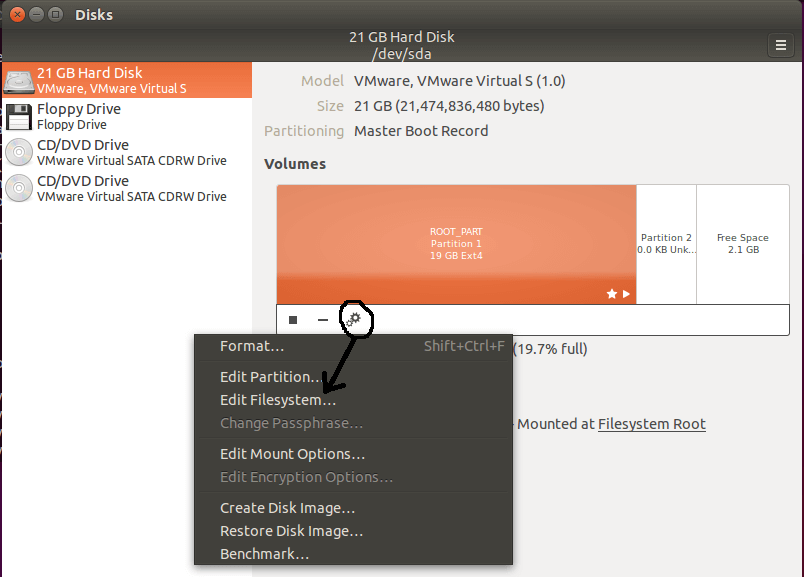


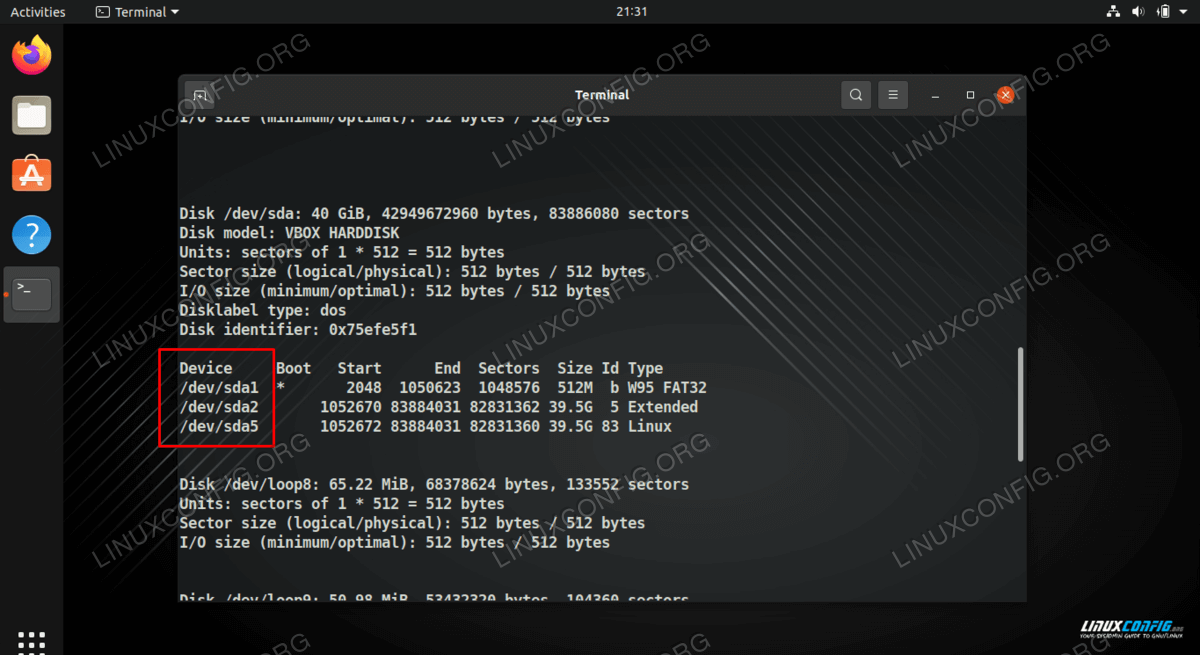


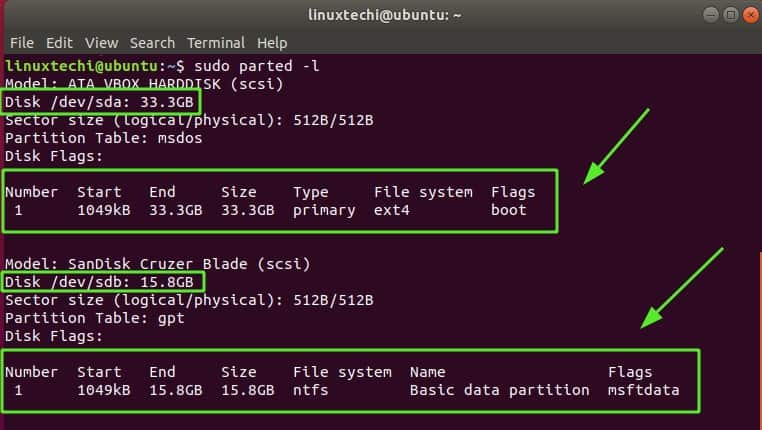

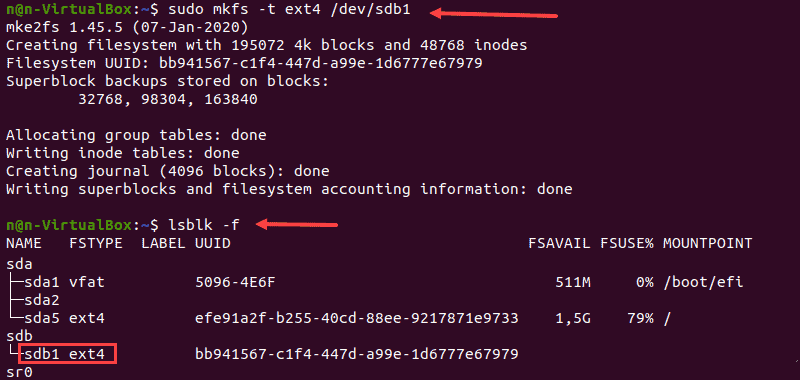

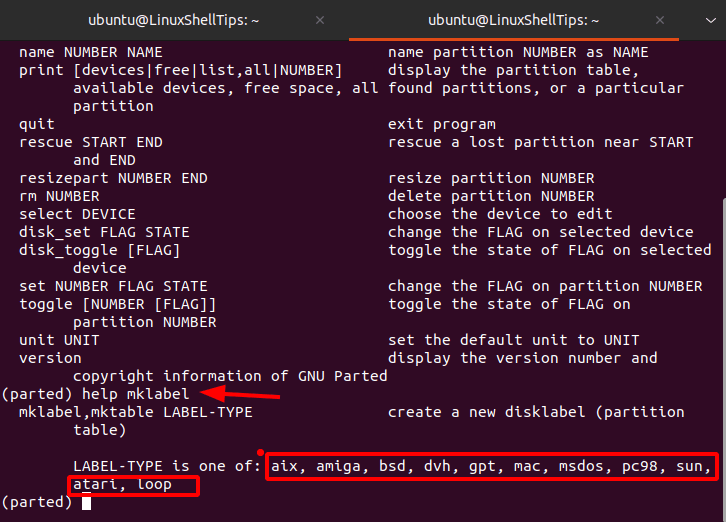
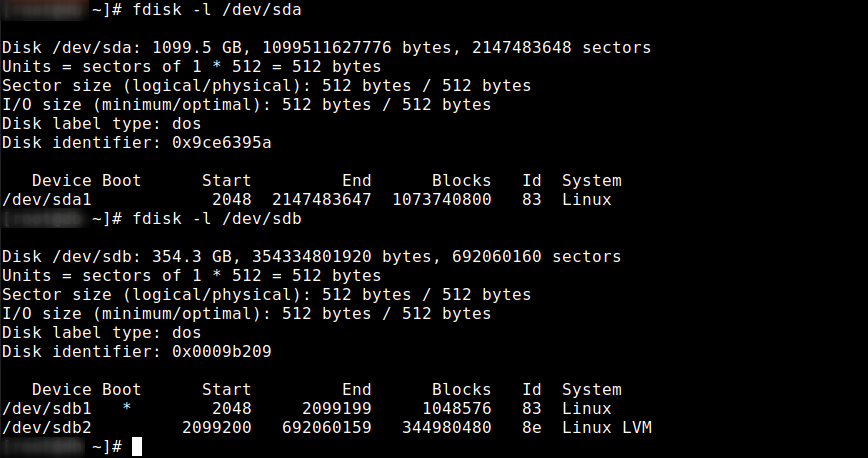

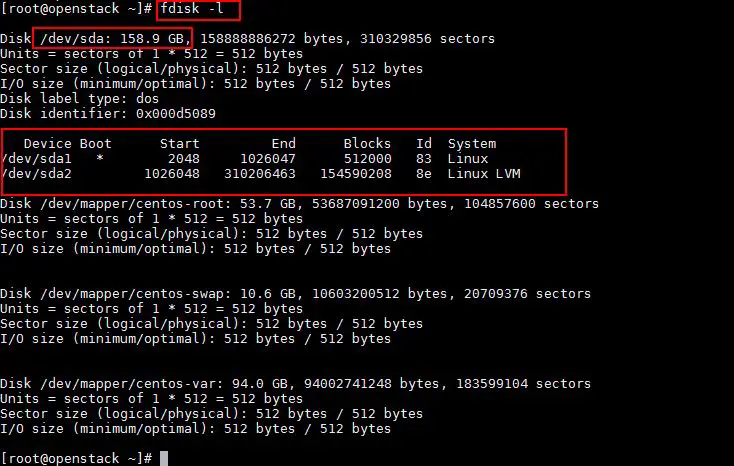



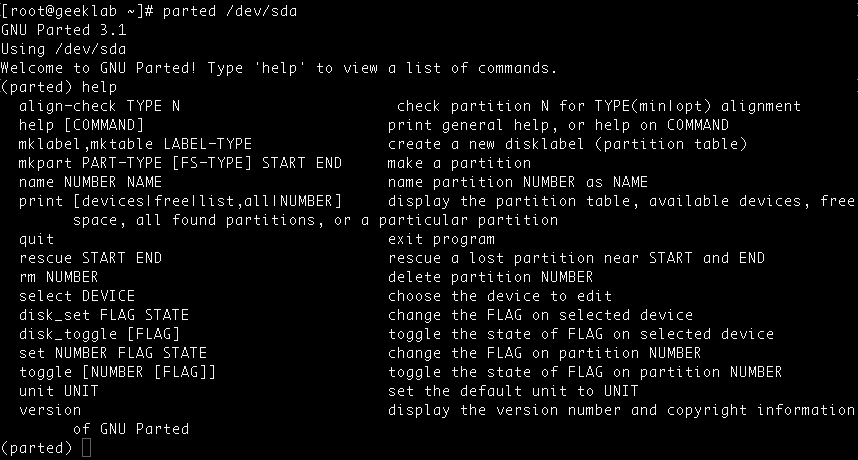

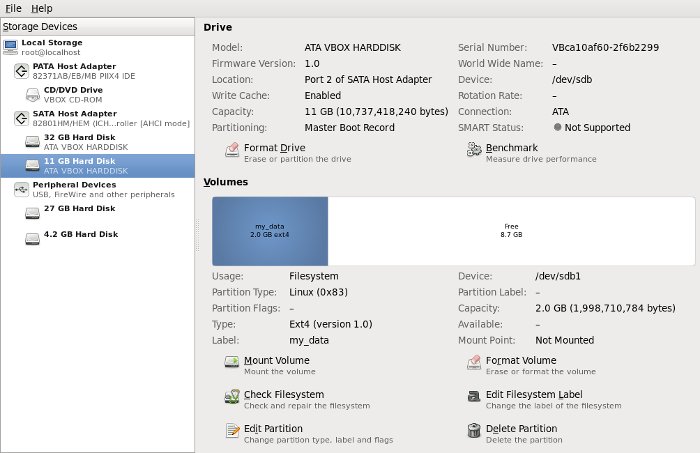

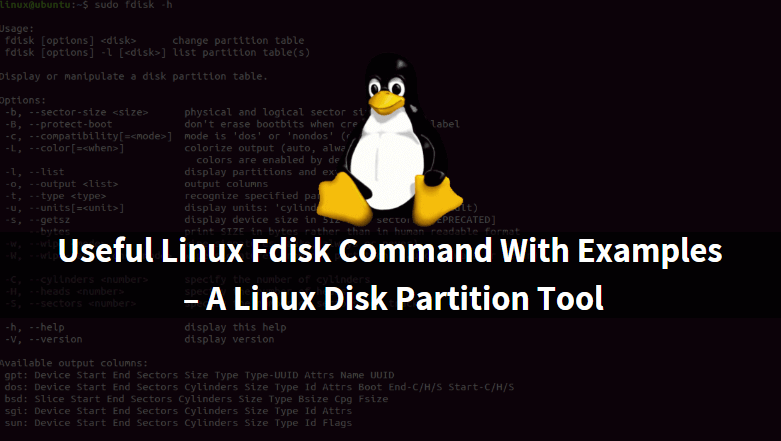


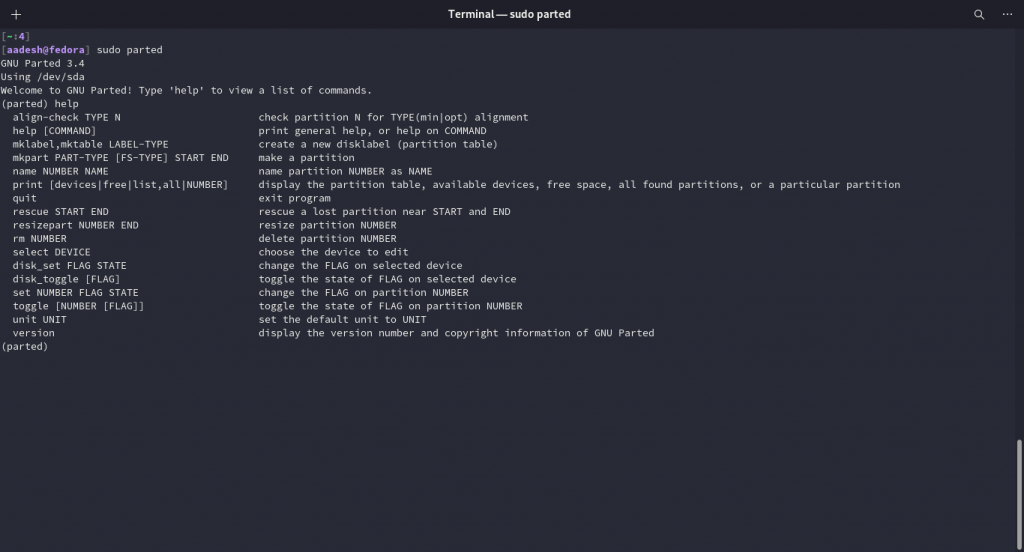

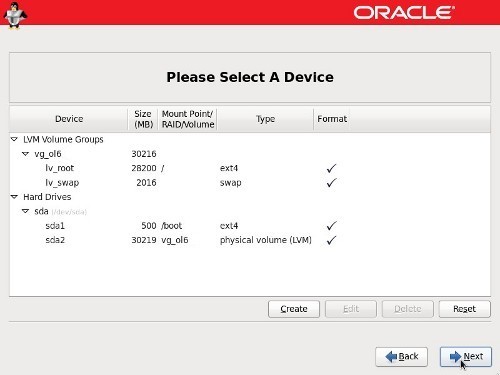

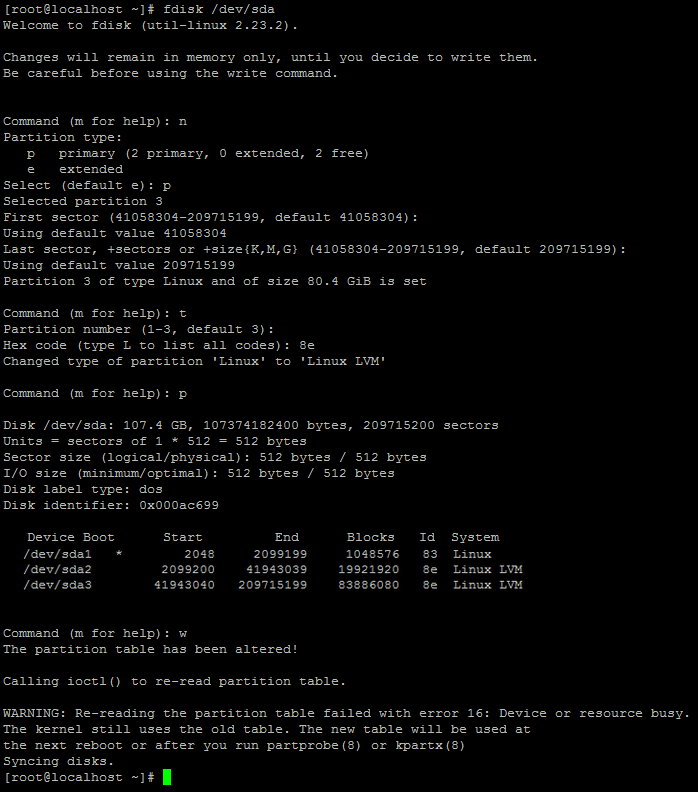



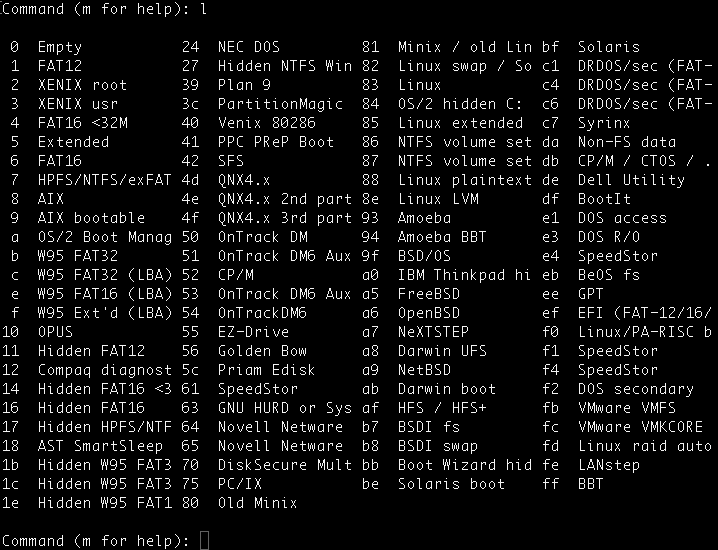

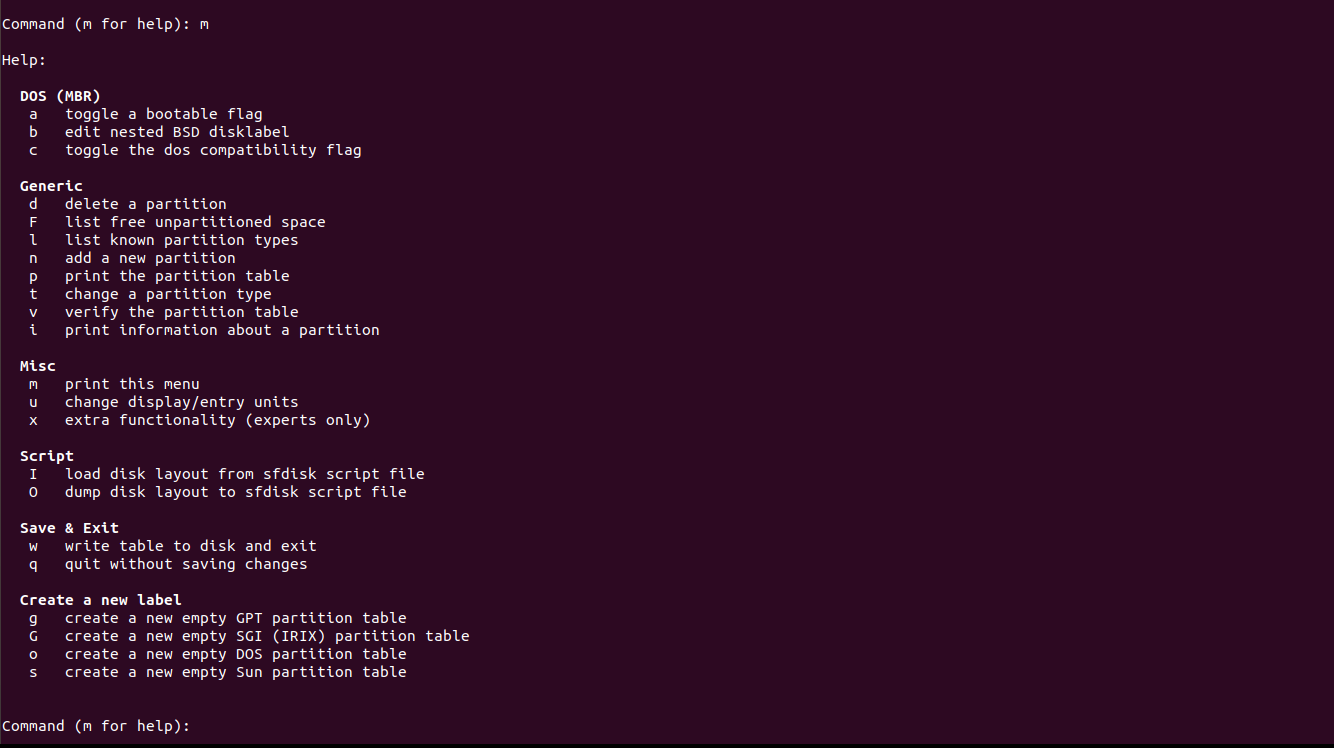
Post a Comment for "39 linux list disk labels"